 |
 |
 |
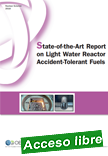 |
State-of-the-Art Report on Light Water Reactor Accident-Tolerant Fuels
Nuclear Energy Agency (NEA), 28/09/18, 372 p.
As part of a broader spectrum of collaborative activities underpinning nuclear materials research, the Nuclear Energy Agency is supporting worldwide efforts towards the development of advanced materials, including fuels for partitioning and transmutation purposes and accident-tolerant fuels (ATFs). |
This state-of-the-art report on ATFs results from the collective work of experts from 35 institutions in 14 NEA member countries, alongside invited technical experts from the People's Republic of China. It represents a shared and consensual position, based on expert judgment, concerning the scientific and technological knowledge related to ATFs. The report reviews available information on the most promising fuels and cladding concepts in terms of properties, experimental data and modelling results, as well as ongoing research and development activities. It also includes a description of illustrative accident scenarios that may be adopted to assess the potential performance enhancement of ATFs relative to the current standard fuel systems in accident conditions, a definition of the technology readiness levels applicable to ATFs, a survey of available modelling and simulation tools (fuel performance and severe accident analysis codes), and the experimental facilities available to support the development of ATF concepts. The information included in this report will be useful for national programmes and industrial stakeholders as an input to setting priorities, and helping them to choose the most appropriate technology based on their specific strategy, business case and deployment schedules.
|
 |
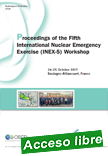 |
Proceedings of the Fifth International Nuclear Emergency Exercise (INEX-5) Workshop
Nuclear Energy Agency (NEA), 02/10/18, 58 p.
The Fifth International Nuclear Emergency Exercise (INEX-5) was developed in response to NEA member countries' desire to test and demonstrate the value of changes put in place following the Fukushima Daiichi nuclear power plant accident. INEX-5 was held during 2015 and 2016, and was followed by the Fifth International Nuclear Emergency Exercise (INEX-5) Workshop in early 2017. |
Representatives from 22 member countries, the International Atomic Energy Agency and the European Commission attended the workshop, where participants identified elements emerging from INEX-5 that would help improve international and national arrangements for notification, communication and interfaces related to catastrophic events involving radiation or radiological materials.
The workshop was an interactive experience structured around invited presentations, moderated discussions and breakout groups that addressed the four broad topics of communication and information sharing with other countries and international partners; cross-border and international co-ordination of protective actions; mid- and long-term aspects of recovery; and connections with the work of other international organisations and networks. These proceedings provide a summary of the proposals and recommendations for future work in emergency management.
|
 |
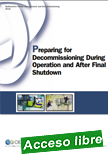 |
Preparing for Decommissioning during Operation and after Final Shutdown
Nuclear Energy Agency (NEA), 25/05/18, 164 p.
The transition from an operating nuclear facility to the decommissioning phase is critical in the life cycle of every facility. A number of organisational and technical modifications are needed in order for the facility to meet new objectives and requirements, and a certain number of activities must be initiated to support the transition and preparation for the dismantling of the facility.
|
Thorough preparation and planning is key for the success of global decommissioning and dismantling projects, both to minimise delays and undue costs and to ensure a safe and efficient decommissioning process. The aim of this report is to inform regulatory bodies, policy makers and planners about the relevant aspects and activities that should begin during the last years of operation and following the end of operation. Compiling lessons learnt from experiences and good practices in NEA member countries, the report supports the further optimisation of transition strategies, activities and measures that will ensure adequate preparation for decommissioning and dismantling.
|
 |
 |
Microbial Influence on the Performance of Subsurface, Salt-Based Radioactive Waste Repositories
Nuclear Energy Agency (NEA), 22/05/18, 72 p.
For the past several decades, the Nuclear Energy Agency Salt Club has been supporting and overseeing the characterisation of rock salt as a potential host rock for deep geological repositories. This extensive evaluation of deep geological settings is aimed at determining? through a multidisciplinary approach? whether specific sites are suitable for radioactive waste disposal. |
Studying the microbiology of granite, basalt, tuff, and clay formations in both Europe and the United States has been an important part of this investigation, and much has been learnt about the potential influence of microorganisms on repository performance, as well as about deep subsurface microbiology in general. Some uncertainty remains, however, around the effects of microorganisms on salt-based repository performance. Using available information on the microbial ecology of hypersaline environments, the bioenergetics of survival under high ionic strength conditions and studies related to repository microbiology, this report summarises the potential role of microorganisms in salt-based radioactive waste repositories.
|
 |
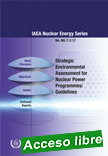 |
Strategic Environmental Assessment for Nuclear Power Programmes:
IAEA Nuclear Energy Series, 2018, 74 p.
This publication describes the various approaches to the techno–economic assessment of a project for the long term operation of a nuclear power plant in its specific market environment. It examines the process of defining the technical scope required to prolong the operating licences of nuclear power plants and highlights the need for further studies on technical cost drivers and economic assessments in order to better define the cost boundaries of long term operation. |
Information is also provided on the new IAEA software LTOFIN, which was developed to assist in performing long term operation economic assessments within the process described in the publication.
|
 |
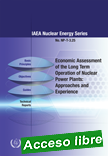 |
Economic Assessment of the Long Term Operation of Nuclear Power Plants: Approaches and Experience
IAEA Nuclear Energy Series, 2018, 126 p.
This publication describes the various approaches to the techno–economic assessment of a project for the long term operation of a nuclear power plant in its specific market environment. It examines the process of defining the technical scope required to prolong the operating licences of nuclear power plants and highlights the need for further studies on technical cost drivers and economic assessments in order to better define the cost boundaries of long term operation.
|
Information is also provided on the new IAEA software LTOFIN, which was developed to assist in performing long term operation economic assessments within the process described in the publication.
|
 |
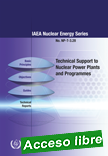 |
Technical Support to Nuclear Power Plants and Programmes
IAEA Nuclear Energy Series, 2018, 130 p.
This publication addresses relevant aspects of requesting and obtaining effective technical support (TS) and its adequate utilization in decision making on nuclear power programmes, projects and plants. It describes the TS functions and associated organizational activities and skills in providing technical and scientific input to the decisions on plant safety and performance throughout the plant’s lifecycle and serves as a guidance for establishing and sustaining TS capability and capacity in Member States both embarking on nuclear power programmes and operating nuclear power plants. |
The publication also presents observations, lessons learned and conclusions drawn from good practices for defining and maintaining roles, responsibilities and interfacing requirements of technical support organizations (TSOs), nuclear power project/plant entities and other stakeholders. As such, it provides a set of descriptive and practiced processes that integrate technical and scientific information for safety, performance and economical aspects in support of sound and timely decisions on the safe, reliable and efficient operation of nuclear power plants.
|
 |
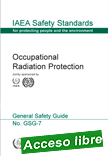 |
Occupational Radiation Protection - General Safety Guide
IAEA Safety Standards Series, 2018, 335 p.
This Safety Guide, prepared jointly by the International Atomic Energy Agency (IAEA) and the International Labour Organization (ILO), provides guidance on fulfilling the requirements of the International Basic Safety Standards (IAEA Safety Standards Series No. GSR Part 3) with respect to occupational exposure. It provides general guidance on the development of occupational radiation protection programmes as appropriate for the sources of radiation likely to be encountered in the workplaces in question to fulfil the management’s responsibility for protection and safety.
|
Detailed guidance is also provided on the monitoring and assessment of workers’ exposure due to external radiation sources and from intakes of radionuclides. The Safety Guide reflects the current internationally accepted principles and recommended good practices in occupational radiation protection, with account taken of the conceptual changes and technological enhancements that have occurred over the past decade.
|
 |
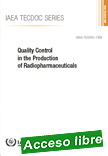 |
Quality Control in the Production of Radiopharmaceuticals
IAEA TECDOC, 2018, 148 p.
Advances have led to the production of new radiopharmaceuticals and availability of new production routes. Various new diagnostic agents in the field (such as Ga-68 radiopharmaceuticals and generators) as well as therapeutic agents (such as alpha emitters) have been added to the clinician’s menu. It is essential that radiopharmaceuticals are prepared within a robust quality control system encompassing materials and personnel, with adequate documentation, and continuous review of ongoing results.
|
This publication provides guidelines and best practices for the quality control of medical radioisotopes and radiopharmaceuticals. It was written by a group of experts with experience across a range of radiopharmaceuticals and is intended to support professionals in the preparation of good quality and safe products to be used in nuclear medicine procedures.
|
 |
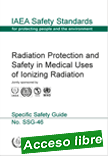 |
Radiation Protection and Safety in Medical Uses of Ionizing Radiation -
Specific Safety Guide IAEA Safety Standards Series, 2018, 318 p.
This Safety Guide provides recommendations and guidance on fulfilling the requirements of IAEA Safety Standards Series No. GSR Part 3 for ensuring radiation protection and safety of radiation sources in medical uses of ionizing radiation with regard to patients, workers, carers and comforters, volunteers in biomedical research, and the public.
|
It covers radiological procedures in diagnostic radiology (including dentistry), image guided interventional procedures, nuclear medicine, and radiotherapy. Recommendations and guidance are provided on applying a systematic approach to ensure that there is a balance between being able to utilize the benefits from medical uses of ionizing radiation and minimizing the risk of radiation effects to people.
|
 |
| |
|
|

|
|
|
| |
|
|
| |
| |
|
|
| |
| |
|
|
| |
| |
|
|
|
